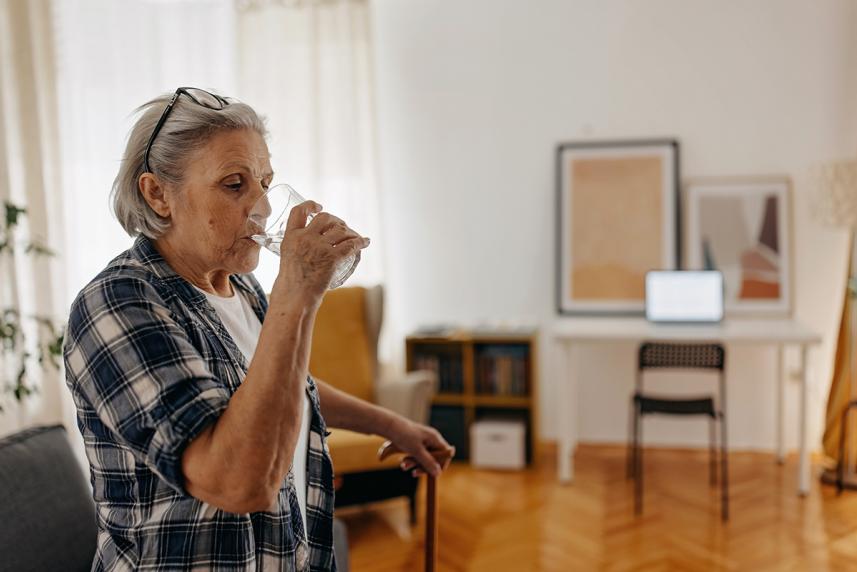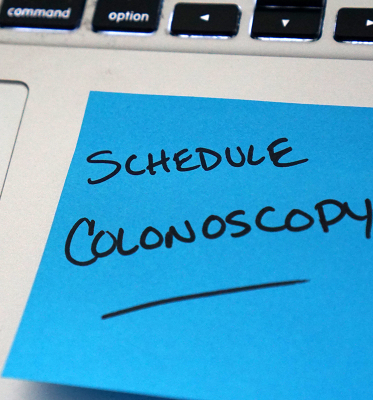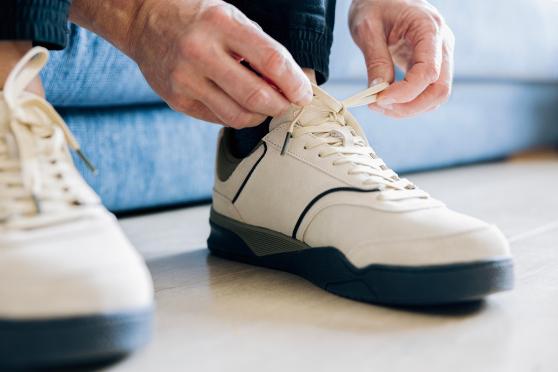10 colonoscopy prep tips from a gastroenterologist
Getting ready for this important screening? These expert doctor’s tips can make the process a bit easier.

Is your colonoscopy coming up soon? Congratulations on doing something great for your health. Every year, millions of American adults get this important test to screen for colorectal cancer.
It may have been a while since you’ve had a colonoscopy. But you probably remember the preparation part: The night before, you drink a formula to clean out your bowels. And if you’re dreading the process, you’re not alone.
The prep for a colonoscopy scares away many people, says gastroenterologist Maurice A. Cerulli, M.D., of Northwell Health in Great Neck, New York. But there are ways to make the process easier.
Here, we break down the basics of getting a colonoscopy and share Dr. Cerulli’s top tips for making the prep easier. “We can find a solution for everyone,” he says.
Take advantage of your HMSA Well-Being Lifestyle Resources. Hawaii–based health coaches are available to help you create a plan and offer support as you work toward your health goals. Learn more about Health Coaches and other Lifestyle Resources here.
Who should get a colonoscopy?
Everyone between ages 45 and 75 should get regular colorectal screenings, according to the U.S. Preventive Services Task Force. The American Cancer Society recommends a colonoscopy every 10 years. For some individuals, doctors may recommend stool-based tests to do at home every one to three years. (To learn more about these home tests, read The easy way to check for colorectal cancer at home.)
If you’re considered at high risk for colorectal cancer, talk to your doctor about more frequent screenings. People between ages 76 and 85 should follow a screening schedule based on their overall health and prior screening history. If you’re older than 85, you no longer need screenings.
Medicare covers screening colonoscopies every 10 years with no minimum age requirement. For members at high risk for colorectal cancer, Medicare covers a screening colonoscopy every 24 months.
Looking for a primary care provider or specialist? Go to HMSA.com and use Find a Doctor to find one near you.
How a colonoscopy works
At the doctor’s office or hospital, you’ll get an anesthetic to put you to sleep. The doctor inserts a flexible, lighted tube with a scope into your rectum and checks for abnormal growths called polyps along the colon and inside the rectum. If they find a growth, it can be removed at that time, according to the Centers for Disease Control and Prevention.
For your doctor to get a clear look, your intestines need to be empty of stool. That’s why you need to clean your bowels the night before your test.
Several days before that, you’ll have to stop eating certain foods that can be difficult to fully remove from the bowel. Your doctor will tell you what those foods are.
You’ll have some uncomfortable times in the bathroom during the prep. That’s unavoidable. But there are tips that can make the process easier. Here is Dr. Cerulli’s best advice.
Recommended reading: 5 common colorectal cancer myths, debunked
Prep tip #1: Talk to your doctor in advance
Several weeks before the screening, get in touch with your doctor. Let them know about your work schedule, insurance coverage, anesthesia concerns, and usual bowel habits.
“For instance, if you tend to be constipated or if you have kidney issues, we can change the preparation formula we prescribe for you,” says Dr. Cerulli. “Or if a patient is terrified of sedation, I can use a pediatric colonoscope to make the procedure tolerable while they’re fully awake.”

Learn more about your benefits for this important health screening. For plan information, view your Evidence of Coverage in My Account.
Prep tip #2: Create a calendar
Your doctor will outline when to start modifying your diet, begin fasting, and start taking your preparation drink.
Set reminders on your calendar or smartphone. This will help you remember which foods to avoid. If you anticipate roadblocks, mention them early. For example, laxative pills, alternate preparations, and enemas can be used if you can’t stomach the regular pre-colonoscopy drinks.
Prep tip #3: Remove forbidden foods
Several days before the test, keep prohibited foods off your plate. According to the Colorectal Cancer Alliance, these include:
- Seeds, nuts, and popcorn
- Raw vegetables with skin, broccoli, cabbage, corn, peas
- Whole -grain bread, cereal such as shredded wheat and granola, brown rice
- Fruits with skin
- Tough meats with gristle
- Fatty foods
Replace them with foods your doctor allows.
Prep tip #4: Head to the store
Stock your colonoscopy supplies early. You’ll need plenty of soft toilet paper and wipes, various flavorings for water, and clear fluids. (More on these below.)
One important item for your shopping list: something to make the liquid laxative more palatable. Some people swear by ice pops, flavored gelatin, clear sodas, or juices. Don’t buy anything that’s deep red, purple, or blue — it could leave a stain on the colon that a doctor might mistake for an abnormality.
“Anything transparent will do, from apple juice to white grape juice to ginger ale, and some people like bouillon to warm up,” says Dr. Cerulli.
Prep tip #5: Indulge before “the big prep”
Some doctors insist on switching to clear fluids well before the preparation period to ensure that no additional waste can build up in the colon). But Dr. Cerulli believes that allowing “light” treats immediately before the formal preparation schedule improves compliance.
“I’m a big fan of ice cream before the prep,” says Dr. Cerulli. He also recommends foods like soft cheeses, milk shakes, and yogurt. These so-called “solid liquids” are particularly helpful for people who might become ravenously hungry before the test day.
Your doctor will tell you when your actual fast will begin. At that point, you’ll stop eating all solid foods and switch to clear liquids only.
Prep tip #6: A spoonful of sweetener helps the medicine go down
You can also sweeten the preparation drink. “Anything that dissolves into a clear liquid is acceptable, but it’s best if you stick with artificially sweetened versions rather than sugar, which makes the intestinal lining absorb more water,” Dr. Cerulli says. “Be sure the liquid is chilled to cut the saltiness,” he adds.
Try sipping it through a straw on the back of your tongue to avoid having the liquid in your mouth for too long. Dr. Cerulli also recommends alternating between sips of the preparation liquid and licks of a popsicle, small amounts of ginger ale, or flavored water or seltzer.
And, of course, none of it can be heavily colored.
Prep tip #7: Equip your bathroom
About one to three hours after you’ve downed the first half of your laxative solution — roughly 16 hours before the colonoscopy — the diarrhea begins. Stock your bathroom with magazines and books, plenty of wipes, soft toilet paper, creams, liquid hand soap, and clean towels.
Consider creating a relaxing playlist. Or put on your favorite podcast to keep you company during extended bathroom visits.
Prep tip #8. Stay hydrated
Throughout the prep, it’s important to keep your digestive system moving with lots of clear liquids.
“Diarrhea removes fluids from the body, so you’ll have to continually replace them with water, in addition to the prep liquid, to prevent dehydration,” says Dr. Cerulli.
But don’t consume a gallon all at once, he advises. Sip slowly and alternate the prep drink with water flavored with lemon, clear juices, or sodas. Aim for eight ounces every 15 minutes. When your diarrhea is as clear as the liquids, possibly with a slightly yellowish hue, you’re done. Otherwise, increase the water intake.
Prep tip #9: Keep irritation at bay
Nonstop bathroom trips create irritation, so keep moisturizing wipes handy.
“Your loose bowel movements contain lots of bile that can burn your skin, so regular toilet paper is inadequate,” says Dr. Cerulli.
But be careful not to apply any creams — including diaper rash ointment — until your skin is totally clean and dry. Otherwise, creams can trap irritants that aren’t completely removed and make things worse, says Dr. Cerulli.
Prep tip #10: Get ready for post-procedure
Some people emerge from a colonoscopy feeling energized and refreshed. But many patients have some unsteadiness from the sedation. You’ll need to have a family member or friend pick you up and drive you home.
Beyond that, expect some cramping and discomfort, which is mostly due to the carbon dioxide pumped into the colon during the test. You might also be gassy, but otherwise you can return to normal soon.
You’ll also be pretty hungry, Dr. Cerulli adds. Be sure to have some of your favorite healthy foods waiting for your post-colonoscopy celebration!
Additional sources:
Colonoscopy guidelines: U.S. Preventive Services Task Force
Colorectal cancer screening options: American Cancer Society
Colonoscopy procedure details: Centers for Disease Control and Prevention
Foods to avoid: Colorectal Cancer Alliance
H3832_8750_5MS623_24_C
© 2023, Linkwell Health, Inc. All content owned or licensed by Linkwell Health, Inc. All rights reserved.


